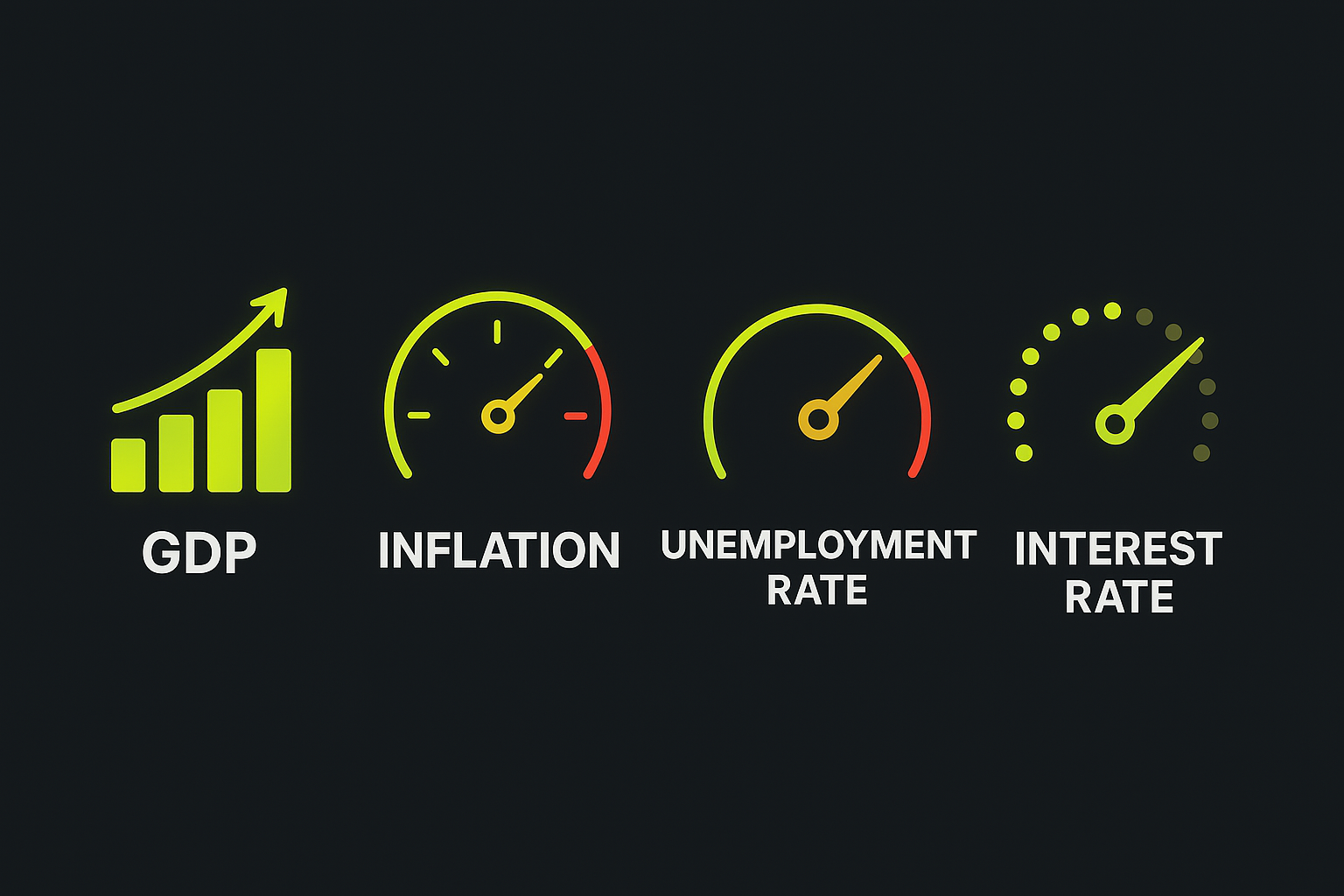While many retail traders primarily focus on technical analysis, understanding fundamental drivers offers a more comprehensive market perspective. For swing traders operating on longer time horizons, these fundamental factors often explain significant market moves that technical analysis alone cannot account for.
This lesson covers the most important economic indicators that influence trading decisions.

Key Economic Indicators
1. Employment Reports
What they are: Employment reports provide data on job creation, unemployment rates, and labor market health.
Why they matter: Employment directly reflects economic vitality. Strong employment indicates economic growth, while rising unemployment suggests economic weakness.
Key example: The U.S. Non-Farm Payrolls (NFP) report, released on the first Friday of each month, often creates significant market volatility globally.
2. Gross Domestic Product (GDP)
What it is: GDP measures the total value of goods and services produced within a country over a specific timeframe.
Why it matters: As the broadest measure of economic activity, GDP growth indicates expansion, while contraction suggests economic difficulties.
Key components:
- Consumer spending
- Business investment
- Government spending
- Net exports
Market impact: Currency values typically strengthen when GDP growth exceeds expectations and weaken when growth disappoints.
3. Trade Balance
What it is: Trade balance represents the difference between a country's exports and imports.
Key outcomes:
- Trade Surplus: Exports exceed imports (positive for currency)
- Trade Deficit: Imports exceed exports (potentially negative for currency)
Why it matters: Trade balances affect currency demand. Countries with trade surpluses typically see stronger currencies as foreign buyers need their currency to purchase exports.
4. Consumer Price Index (CPI)
What it is: CPI measures the average change in prices paid by consumers for a basket of goods and services.
Why it matters: CPI serves as the primary gauge of inflation, directly influencing central bank monetary policy.
Market impact: Higher-than-expected inflation often leads to expectations of interest rate hikes, strengthening the currency. Lower-than-expected inflation may signal economic weakness.
5. Purchasing Managers Index (PMI)
What it is: PMI surveys purchasing managers across manufacturing and service sectors about business conditions.
Why it matters: As a leading indicator, PMI often signals economic changes before they appear in other data.
Key thresholds:
- PMI above 50 indicates expansion
- PMI below 50 indicates contraction
Market impact: Strong PMI readings typically boost the respective country's currency and equity markets as they signal future economic growth.
6. Interest Rate Decisions
What they are: Central banks periodically decide whether to raise, lower, or maintain benchmark interest rates.
Why they matter: Interest rates affect borrowing costs throughout the economy and serve as the primary tool central banks use to manage inflation and economic growth.
Market impact: Interest rate changes significantly affect currency values. Higher rates typically strengthen a currency by attracting foreign capital seeking better returns.
7. Central Bank Statements
What they are: Official communications from central banks explaining policy decisions and economic outlook.
Why they matter: Markets often react to central bankers' forward guidance as much as to actual policy changes.
Key terminology:
- Hawkish: Indicates concern about inflation and potential interest rate increases
- Dovish: Indicates concern about economic growth and potential interest rate decreases
Market impact: Unexpectedly hawkish statements typically strengthen a currency, while unexpectedly dovish statements often weaken it.
Key Takeaways
- Economic indicators are significant market movers, helping explain and anticipate market movements.
- Different indicators create varying market impacts, with interest rate decisions and GDP reports typically generating more significant reactions than others.
- Markets react to how indicators compare to expectations rather than absolute values.
- Indicators form an interconnected web, with central banks monitoring employment, GDP, and inflation to make interest rate decisions.
- The broader economic environment and market sentiment influence how indicators affect markets.
- Hawkish central bank sentiment indicates policy tightening, while dovish sentiment suggests easing or maintaining policy.